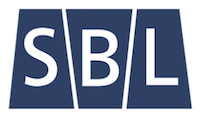To Sub or not to Sub….

Time to concentrate on building your index structure. 🙂
Main headings are your primary access points for your readers. If you just give priority to that, you’ll be headed in the right direction. There are situations, however, where it would be useful to provide a more detailed breakdown, but let’s not get carried away with that concept. Indexers spend quite a bit of their analysis time dealing with subheadings, so I’m making this the sole topic of this part of our series.
Too Much Detail?
Remember that an index is designed to take the user to the page or pages where the topic is discussed, not to the word or sentence, so you don’t have to put a bunch of subheadings under a topic when they all fall on the same page. If those detailed subheadings are important, make them their own main headings instead. Please avoid:
dragons
Try this instead (assuming the book is about just dragons—a metatopic—see Part 2):
bones, 34
digestion, 28
dragons
food choices, 28
scales, 34
teeth, 35
tongue, 35
wings, 36
If the book was about other fantasy creatures and not just dragons, you might be able to get away with (assuming this was all that was covered for dragons):
dragons, 28, 34–36
A longer index is not necessarily more useful just for being long and detailed. Overly detailed main headings with many detailed subheadings can make it slower and more difficult for the user to find things. Besides, all this unnecessary detail is time-consuming for you to put in. 🙂
Not Enough?
And then there are the folks who just concentrate on main headings and leave the user with things like this to deal with:
operators, 37, 57–58, 63–77, 100–102, 166, 168, 171, 190, 215–217
Please spare us. Assuming this is a printed book and not an ebook with links for the page numbers (and even then!), the user will be required to go back and forth looking at each one of these locators to find what they are looking for (in this case, discussion of arithmetic and logical operators in formulas). Not fair! After about five flippings back and forth, most users will give up. So, we indexers have a rule of thumb to seriously consider subentries if there are more than five locators. This rule can vary depending on our client publisher’s needs, but it’s a good general rule to go by. Here’s how you could make something like the above situation easier on your index user:
operators
Long Page Ranges
This one is a little more debatable. One could send a user to a continuous discussion of a large-scale topic that covers more than 10–15 pages (like a chapter topic), but if the range is long, it’s a courtesy to break that main heading down into the next level of specificity (but avoiding the too-detailed scenario). I usually make subentries for the page ranges for main subtopics under the main chapter topic and leave it at that.
So, do yourself and index users a favor and leave out unnecessary detail, and do your users a favor by giving just enough when it’s necessary. That will make for a nicely balanced index.
If you’d like to review the information so far, check out Part 1 and Part 2 of this series. Next week, we’ll briefly tackle cross-referencing and double-posting.
_____________________________
As a courtesy, we’ve have taken this series of four posts and combined them into a PDF (A Brief Writer’s Guide to Book Indexing) that you can download to keep as a reference.
And if you are still overwhelmed by the indexing process and would like some pro help, we’re right here (info@potomacindexing.com).
(This series was originally published on the PI blog in 2014)



Leave a Reply